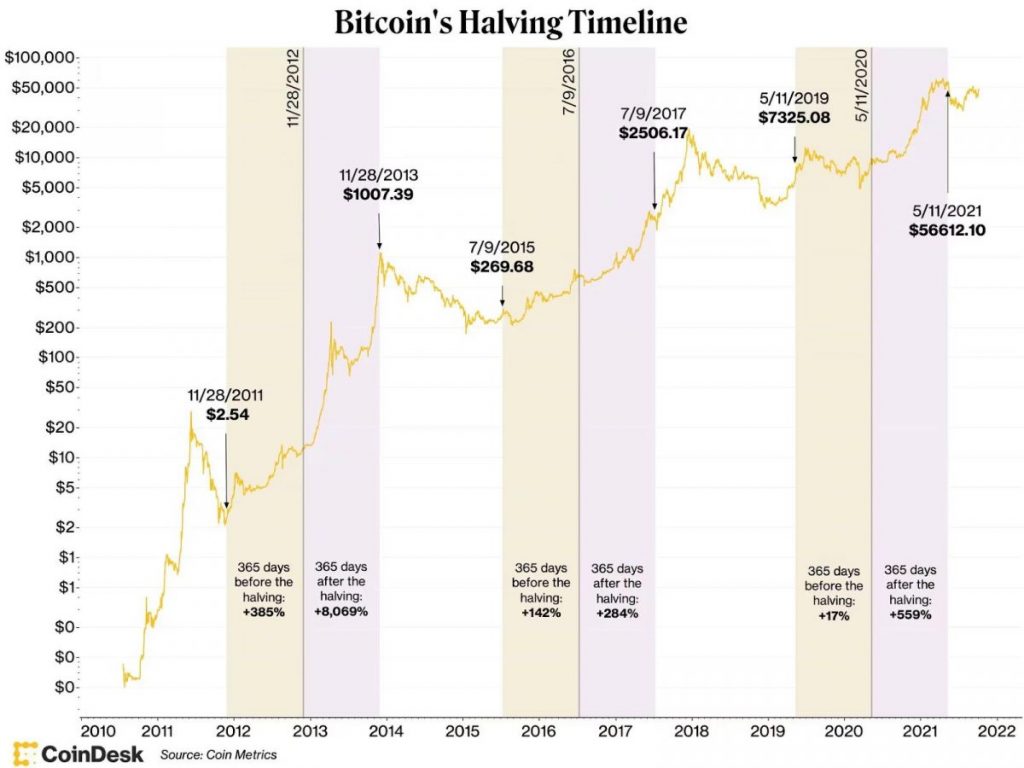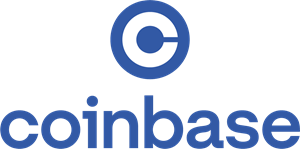[
The post The History of Bitcoin Halving by Gianluca Miller appeared first on Benzinga. Visit Benzinga to get more great content like this.
Every four years Bitcoin mining rewards are halved, leading to an overall increase in price. The fourth halving is expected to occur in April, and if history is any indication, Bitcoin should exceed all-time highs in the following year.
Many refer to Bitcoin (BTC) as digital gold, and it has been one of the highest-performing assets over the last decade. Bitcoin, created in 2009, is the digital currency of the Bitcoin network, enabling peer-to-peer transactions in a trustless and permissionless environment. Its scarcity allows it to be of value, incentivizing users and miners equally. Its supply is capped at 21 million Bitcoins, and there are 19.6 million in circulation.
Bitcoins come into the market through miners. Bitcoin is a decentralized network operating on a proof of work (PoW) consensus mechanism. PoW is a computation-intensive strategy in which nodes (miners) compete with each other to verify transactions on the network by solving complex mathematical problems.
The winner can add the next block in the chain, receiving Bitcoin as a reward. To maintain scarcity, which helps ensure value and keep the miners incentivized to uphold the network, the amount of Bitcoin mined per block is halved every 210,000 blocks. This occurs roughly every four years, typically leading to an increase in Bitcoin’s price, leading many to believe Bitcoin operates in four-year market cycles.
Bitcoin is up 58% year to date largely because of the imminent halving expected to occur in April and the exchange-traded fund (ETF) approvals. Take a look at the history of Bitcoin halvings to learn how price action and markets move around halving events.

Limited Time Offer: Trade $100, Get $10
Buy $100 worth of crypto and get a $10 bonus!
Disclosure
eToro supports the following currencies: BTC, ADA, DASH, DOGE, EOS, ETH, LTC, NEO, XLM, XTZ, TRX, ZEC. eToro USA LLC; Investments are subject to market risk, including the possible loss of principal. T&Cs apply. *The bonus is available to Benzinga readers in the US for open states only. Served by eToro USA LLC.
.bz3-cta-inner .button-link {
color: #07729c;
text-decoration: underline;
}
window.LOAD_MODULE_LAYOUT = true;
Table of contents
[Show]
Bitcoin Halving History and Dates
Below is a chart that considers Bitcoin’s price 365 days before and after each halving, providing a great visual of the effects.

First Bitcoin Halving – Nov. 28, 2012
- The first halving occurred on Nov. 28, 2012, when the total blocks mined reached 210,000.
- The first halving occurred 1,425 days after Bitcoin’s inception on Jan. 3, 2009.
- In the year leading up to the halving, Bitcoin gained 385%, trading at $2.54. On the day of the halving, Bitcoin traded at $12.20, and one year later, it exploded to $1,007.39, gaining 8,069%.
- The block reward for miners was reduced from 50 BTC to 25 BTC, halving the reward supply.
- The reduction in rewards made BTC more scarce, leading to higher demand and usage, which positively influenced prices.
- Bitcoin’s creation occurred shortly after the 2008 financial crisis, and the halving coincided with a financial rebuild in the U.S.
- Bitcoin’s performance during this time demonstrated its potential as a store of value against inflation and its unique value proposition that the traditional financial system lacked.
Second Bitcoin Halving – July 9, 2016
- The second halving occurred 1,316 days after the first, when the total blocks mined reached 420,000 on July 9, 2016 — the shortest period between halvings.
- In the year leading up to the second halving, BTC’s price increased by 142%, trading at $269.68. On halving day, Bitcoin traded at around $650.96. One year later, Bitcoin grew 284%, trading at $2,506.17.
- The block reward for miners was further reduced from 25 BTC to 12.5 BTC.
- The market reacted strongly to the second halving, causing Bitcoin to hit new all-time highs (ATHs).
- With Bitcoin’s growth and initial coin offerings (ICOs) increasing in popularity, a crypto bull run ensued in 2017.
Third Bitcoin Halving – May 11, 2020
- The third halving occurred 1,458 days after the previous halving on May 11, 2020, when 630,000 blocks were mined.
- In the year before the halving, Bitcoin gained 17%, trading at around $7,325.08. On the third halving day, its price averaged $9,268.15, and in the following year, it ended at $56612.10, gaining 559%.
- The BTC mined per block decreased from 12.5 BTC to 6.25 BTC.
- The third halving occurred during the COVID-19 pandemic, when economic turmoil and uncertainty led to unprecedented monetary stimulus measures by governments and central banks worldwide.
- The decentralized nature of Bitcoin proved to be a vital factor in its resilience and growing acceptance as a real asset class with utility.
Fourth Bitcoin Halving – April 2024
- The fourth halving event is expected sometime between April and May. It will occur when 840,000 blocks have been mined.
- The amount of Bitcoin mined per block will decrease from 6.25 BTC to 3.125 BTC, further reducing the supply of Bitcoin entering the market.
- When the fourth halving occurs, 93.75% of all BTC will have been mined, leading to greater asset scarcity.
- The average price of Bitcoin in April 2023 was $28,857.57. The current price hovers around $69,000.
- Bitcoin eclipsed a new ATH of $73,750.07 on March 14 because of the expected halving and increased exposure resulting from ETF inflows.
- For the first time, cryptocurrencies like BTC and Ether (ETH) were mentioned in the American presidential primary debate. With the mainstream adoption of crypto, an influx of government regulations and policies is sure to follow.
- According to a poll by Grayscale, inflation is the most pressing issue in America right now. Bitcoin’s scarce supply and decentralized nature make it a great hedge against inflation. More people will allocate funds toward Bitcoin as they become educated on the crypto and its value as a deflationary asset.
- As the rate of new Bitcoins entering the supply slows and ETF inflows continue to grow, Bitcoin is poised to have a strong run in the foreseeable future.
Halvings: Bitcoin’s Catalyst for Growth
Bitcoin’s unique halving mechanism has been critical in its meteoric 137,000,000% growth since its creation. For every 210,000 blocks mined, the amount of Bitcoin given to miners as a reward is cut in half, helping maintain scarcity by controlling the release of new tokens into the market.
Historically, Bitcoin has done exceptionally well in the years leading up to and after halving events. There have been three halvings so far, with a fourth expected in April. With each halving, Bitcoin has demonstrated its resilience as a store of value and strong utility as a decentralized payment network.
Bitcoin halvings tend to be a catalyst for extreme growth. As the fourth halving approaches, Bitcoin is currently up over 58% year to date. With the increasing adoption through ETF inflows and the circulating supply of Bitcoin growing slower, Bitcoin experts believe Bitcoin is well-positioned to grow.

Get up to $200 in rewards with Coinbase!
Coinbase users can earn up to $200 on average just by taking advantage of our rewards.
Disclosure
²Sum of median estimated savings and rewards earned, per user in 2021 across multiple Coinbase programs (excluding sweepstakes). This amount includes fee waivers from Coinbase One (excluding the subscription cost), rewards from Coinbase Card, and staking rewards. ³Crypto rewards is an optional Coinbase offer. Upon purchase of USDC, you will be automatically opted in to rewards. If you’d like to opt out or learn more about rewards, you can click here. The rewards rate is subject to change and can vary by region. Customers will be able to see the latest applicable rates directly within their accounts
.bz3-cta-inner .button-link {
color: #07729c;
text-decoration: underline;
}
Frequently Asked Questions
What happens to the BTC price after halving?
In the year following the first, second and third halving, BTC gained 8,069%, 248% and 559%, respectively, averaging 2,970.67%. Historically, halving has caused Bitcoin’s price to rise.
How many more Bitcoin halvings are left?
With 29 estimated halvings left, the final Bitcoin halving is expected to occur in 2140
Is Bitcoin cut in half every four years?
The Bitcoin block reward is halved every 210,000 blocks mined. On average, the first three halvings occurred every 1,399 days — roughly every four years.
The post The History of Bitcoin Halving by Gianluca Miller appeared first on Benzinga. Visit Benzinga to get more great content like this.







